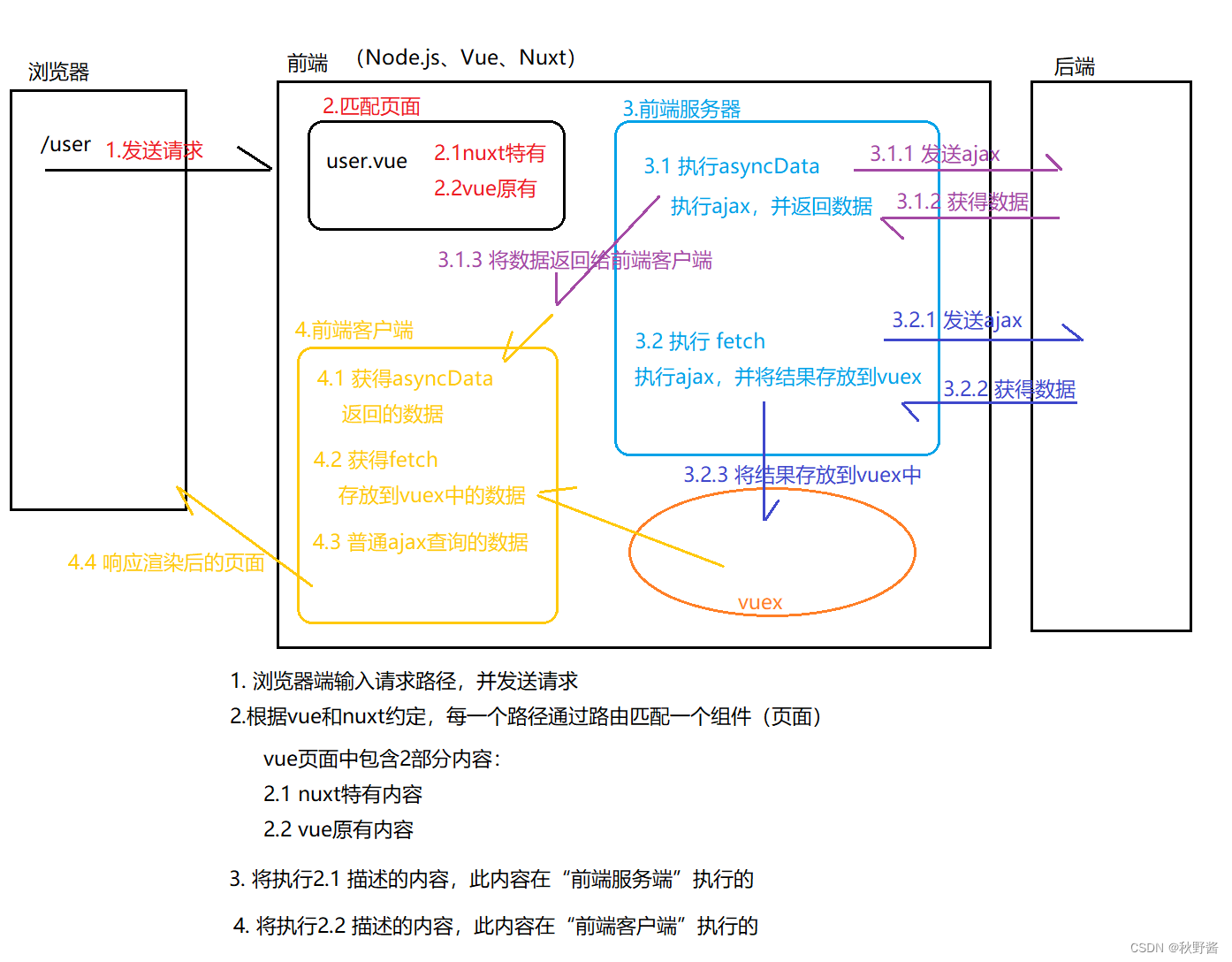JavaEE-Nuxt中的vuex
发布时间:2024年01月24日
Nuxt中的vuex
- 参考:https://v2.nuxt.com/docs/directory-structure/store
3.1 根模块数据操作
-
步骤一:创建
store/index.js添加一个 counter变量,并可以继续累加操作export const state = () => ({ counter: 0 }) export const mutations = { increment (state) { state.counter++ } } -
步骤二:在页面中,使用
<template> <div> 首页 {{counter}} <input type="button" value="+" @click="increment"/> </div> </template> <script> import { mapState,mapMutations } from 'vuex' export default { computed: { ...mapState(['counter']) }, methods: { ...mapMutations(['increment']) }, } </script> <style> </style>
3.2 其他模块数据操作
-
步骤一:创建其他模块
store/book.jsexport const state = () => ({ money: 0 }) export const mutations = { addmoney (state) { state.money += 5 } } -
步骤二:使用指定模块中的数据
<template> <div> 金额:{{money}} <br> <input type="button" value="累加" @click="addMoney(5)"> </div> </template> <script> import {mapState, mapMutations} from 'vuex' export default { methods: { // ...mapMutations({'方法名':'模块/action名称'}) ...mapMutations({'addMoney':'book/addMoney'}) }, computed: { //...mapState('模块名称',['变量']) ...mapState('book',['money']) } } </script> <style> </style>
3.3 完整vuex模板
// state为一个函数, 注意箭头函数写法
const state = () => ({
user: 'jack'
})
// mutations为一个对象
const mutations = {
setUser(state, value) {
state.counter = value
}
}
// action执行mutation
const actions = {
userAction (context,value){
// 可以发送ajax
context.commit('setUser',value)
}
}
// 获取数据
const getters = {
getUser (state) {
return state.user
}
}
export default {
namespace: true, // 命名空间,强制要求,在使用时,加上所属的模块名,例如:book/addmoney
state,
mutations,
actions,
getters
}
3.4. nuxt流程总结

文章来源:https://blog.csdn.net/qiuyeyyy/article/details/135812971
本文来自互联网用户投稿,该文观点仅代表作者本人,不代表本站立场。本站仅提供信息存储空间服务,不拥有所有权,不承担相关法律责任。 如若内容造成侵权/违法违规/事实不符,请联系我的编程经验分享网邮箱:chenni525@qq.com进行投诉反馈,一经查实,立即删除!
本文来自互联网用户投稿,该文观点仅代表作者本人,不代表本站立场。本站仅提供信息存储空间服务,不拥有所有权,不承担相关法律责任。 如若内容造成侵权/违法违规/事实不符,请联系我的编程经验分享网邮箱:chenni525@qq.com进行投诉反馈,一经查实,立即删除!
最新文章
- Python教程
- 深入理解 MySQL 中的 HAVING 关键字和聚合函数
- Qt之QChar编码(1)
- MyBatis入门基础篇
- 用Python脚本实现FFmpeg批量转换
- ArkUI按钮组件深入学习:通过点击按钮实现图片大小调整效果
- maven的pom.xml设置本地仓库
- 【吴恩达·机器学习】第一章:机器学习绪论:监督学习和非监督学习
- vue3.2引用unplugin-vue-components插入,解放开发中import组件
- ONNX分割模型推理
- 【MySQL】巧用 Dense_Rank 窗口函数
- 别再犹豫!一键下载安装Substance3D,在数字世界中创造引人注目的艺术品!
- 将矢量化图像变得简单易用的Vector Magic for Mac/win
- 基于FPGA的74HC595数码管驱动
- 【YOLOV8预测篇】使用Ultralytics YOLO进行检测、分割、姿态估计和分类实践